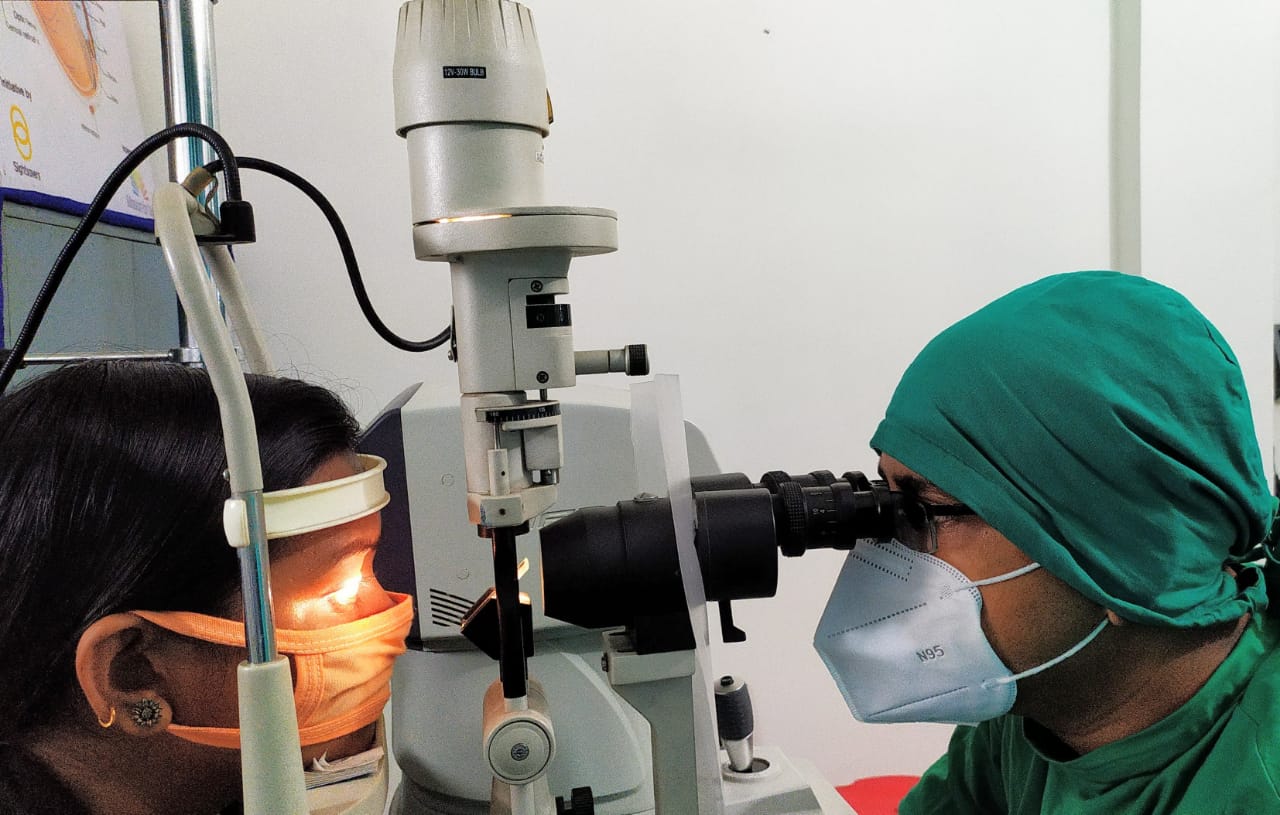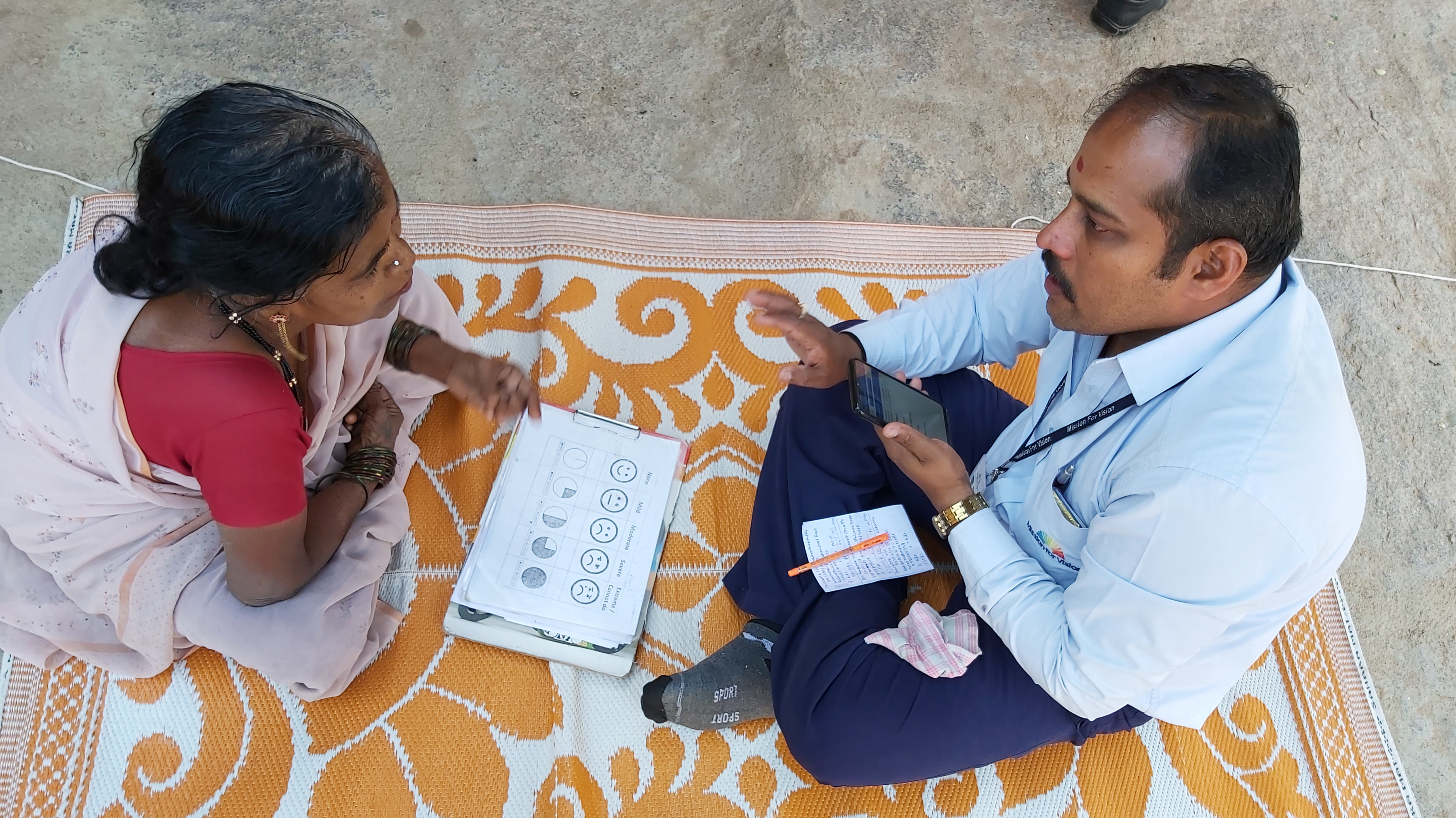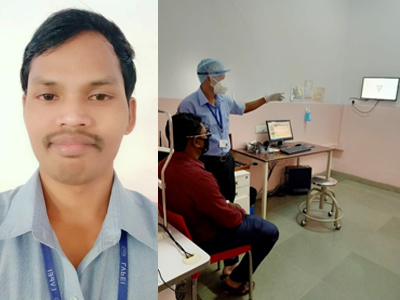Bridging the eye health gap among tribal communities
Created By: Amit Mondal

India is home to 104 million tribal people, accounting to 8.6% of India’s population. These communities are heavily marginalised and often face a lot of discrimination.
As per the Census data (2011) of Rayagada district, 15.18% of people live in urban regions and about 84.82% of people reside in rural areas. In the region, 14.4% of people constitute Schedule Caste (SC) while 56% of people constitute Schedule Tribe (ST). The total literacy rate of the Rayagada district was 49.76% in the 2011 Census; which is less than the average literacy rate of 72.87% of state of Odisha.
Large part of the population of this district, whom we targeted to deliver eye health services are illiterate and underprivileged, largely in rural areas. Due to low literacy rates in the district, the health seeking behaviour is very low. Most people seek health support from Gunia, Dishari or Quacks and they often end up in authorised medical health facilities only when the situation worsens. As per the World Health Organisation (WHO) and National Programme for Control of Blindness (NPCB) survey, the district hospital based in Rayagada town has limited trained resources to provide eye health services.
The need for eye health interventions
Mission for Vision (MFV) in collaboration with the secondary eye care center of LV Prasad Eye Institute (LVPEI), has established eye health services for the needy and ethnic communities of this district. Factors such as low awareness level, poor health-seeking behaviour, and people living below poverty line; explain the financial hardship of these communities. These aspects also have a bearing on the delivery and acceptance of eye health services. In addition, the information on eye health is not disseminated in local language and this language barrier also poses as a huge hurdle.
In one of our MFV studies, we analysed the knowledge, attitude, and practice (KAP) about eye health for this community. Through this study, we found that:
- 90% of respondents did not use spectacles.
- 94% of respondents were not aware of glaucoma.
- 83% people were not aware that diabetes can lead to blindness.
When we assessed the information to understand the source of getting eye health information in the community, it was found that 29% of respondents got this information from village level health workers, 19% of respondents said they get information from local health centers and 33% of respondents said they get information from eye camps in the community. In terms of eye health practice,
- 58% of people do nothing to keep their eyes healthy.
- 6% of respondents still believe that traditional healers are still good.
- More interestingly, 40% of respondents said they never had eye checkups in their lifetime.

How MFV provides eye health interventions to these communities?
Navigating through linguistic barriers and communicating with the local community can be quite tricky. MFV Partner Hospitals often involve local volunteers as translators who help to overcome these barriers. A dedicated outreach screening team of LVPEI secondary eye care centre visits the villages to screen the people with visual impairment and provide the necessary treatment. To conduct these screening camps in the community, the base hospital develops the action plan and involve local level participation like, village headman, Panchayet Pradhan, ASHA (Accredited social health activist) workers, AWW (Anganwadi Worker) workers. The base hospital renders eye health services across the district. Rayagada district is divided into 15 blocks which are administrative divisions denoting sub-districts. Blocks consist of multiple villages and towns. There is a lack of public transportation facilities within the district; especially from interior villages to reach the main roads.
Using private vehicles or hiring transportation can get very expensive for these communities that are already tangled in the shackles of poverty. Therefore, the base hospital arranges transportation services for the patients who need treatment at the secondary centre. In addition to these transportation facilities, MFV initiated its Mission Jyot programme by establishing Vision Centres closer to the community. Ideally, one Vision Centre provides eye health services to nearly 50,000 people in the community. Vision Centres provide eye health services from its location and establish robust referral systems with secondary and tertiary level of eye care systems.
Livelihood and other sources of income
In the region, 48.8% of workers are earning more than 6 months in a year while 51.2% are involved in livelihood activity for for less than 6 months. There are 200 uninhabited villages in the Rayagada district and 3 villages are having a population of more than 5000 as per 2011 Census. Due to lack of employability and poverty, most people have poor diet and do not get enough nutrition. This in turn leads to poor eye health and also impacts pregnant women adversely. In a survey, it was found that around 15-20% pregnant women have severe anaemia and 65% are moderate group among pregnant women due to lack of proper diet & nutritious food, which leads to more complications during childbirth.

Vison restored, what about reviews?
After overcoming all challenges at the village level, patients reach the hospital to undergo cataract surgeries. Considering their economic condition, most patients are provided surgeries at no cost to them. All operated patients are supposed to visit the base hospital for mandatory review visits but a significant number of operated patients do not attend post-operative follow-up reviews in this region. To understand the cause of these review-visit dropouts in this region, MFV conducted a study among this targeted group. The study titled as “Barriers to attending post-operative follow-up reviews after successful cataract surgery in rural tribal communities in Odisha” found the following reasons for their absence:
- 23% could not afford the local transportation
- 15% can see better with an operated eye now
- 7% were sick or had poor health conditions
- 3% were busy with their livelihood activities.
Evidence-based actions
In order to ensure that the eye health interventions reach this populace, community centred approach has been initiated by establishing Vision Centres within the reach of the communities. This has increased the patient footfalls to seek primary eye health and referral at the secondary centre. Review visits have been ensured with the engagement of local eye health cadres and eye health volunteers. Final review visits are now also available at the Vision Centre for patients who have undergone surgery. It reduced the post-operative review dropout rates. Dissemination of eye health information in the local language was one of the priorities that is getting addressed now. The other focus area is to build networking with local health cadres and NGOs in order to ensure a comprehensive reach and coverage. Cluster-based mapping for conducting eye camps and referral of patients at the Vision Centre followed by a visit to the secondary centre has been initiated as well.
About the Author: Amit Mondal leads programme impact efforts at Mission for Vision in east and northeast regions of India. He plays a key role in project evaluation, impact assessment, implementation of research projects, assessment of programme deliverables and management of impact assessment team.
SHARE NOW:
RELATED ARTICLES

Boosting VC Performance in COVID-19 Times
Franklin Daniel shares 10 strategies to improve Vision Centre performance during COVID-19 pandemic
Read More
A Day in the Life of a Field Investigator
Wanted to get a deeper understanding in the day of a Field Investigator? MFV Staff Dhanaji Ranpise shares the ground realities in this blog.
Read More
Stories of Inspiration: Meenaketan Kandori
Here is an inspirational story of Meenaketan, one of our Mission Saksham students, who went through many hardships and struggles to get where he is presently.
Read More